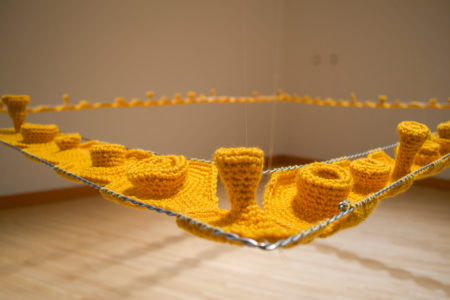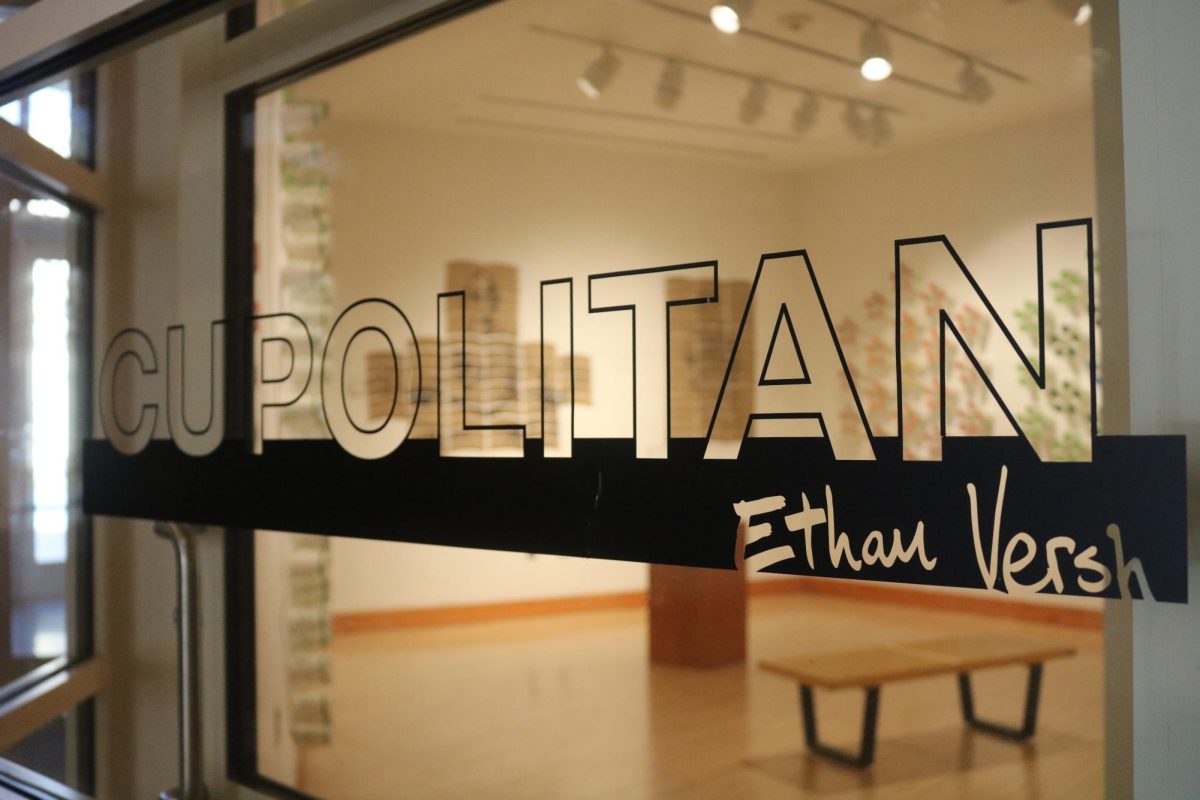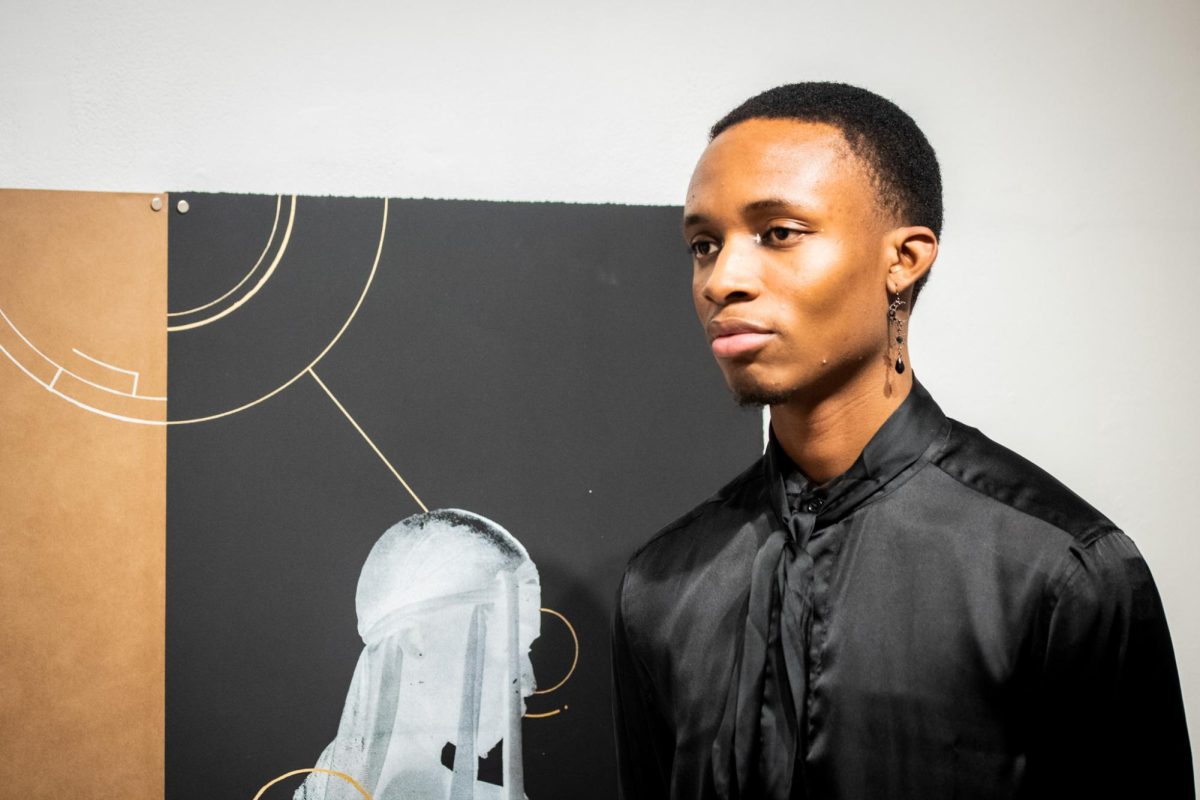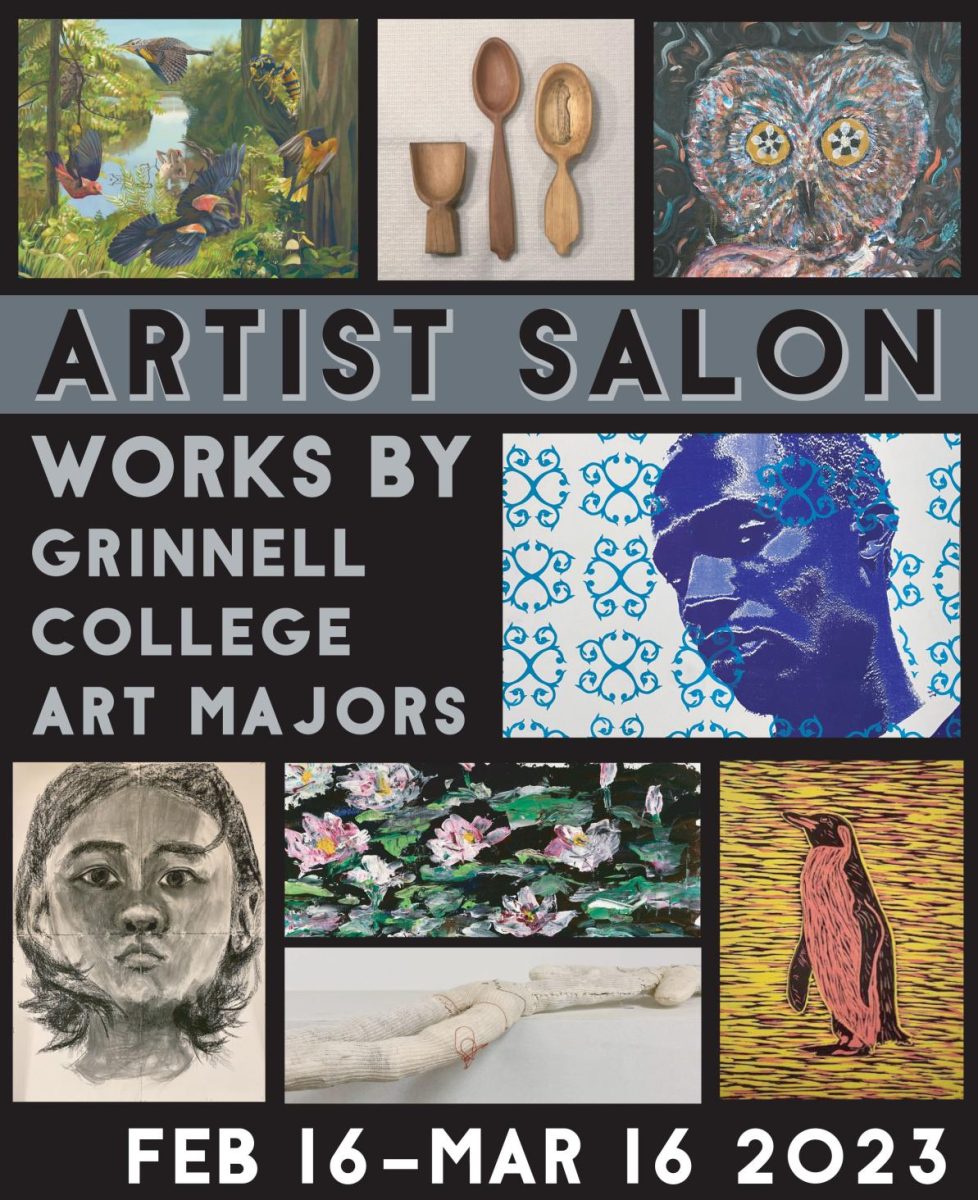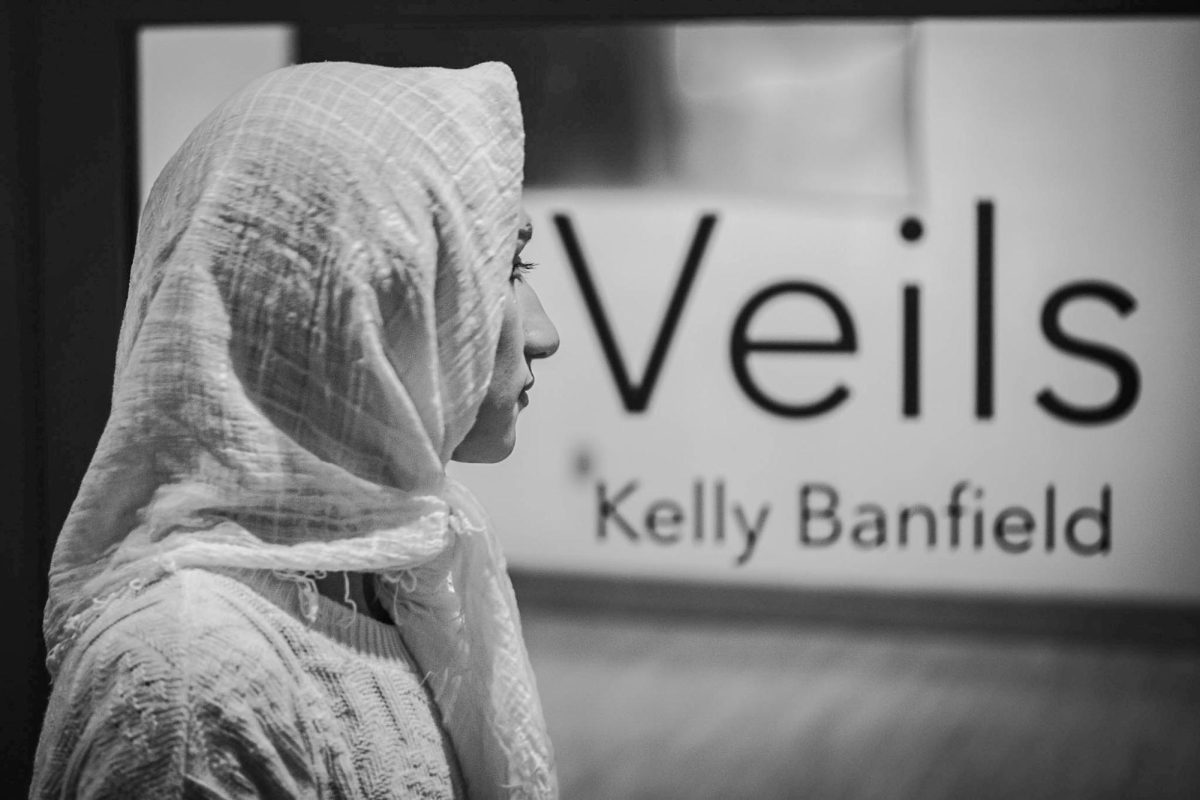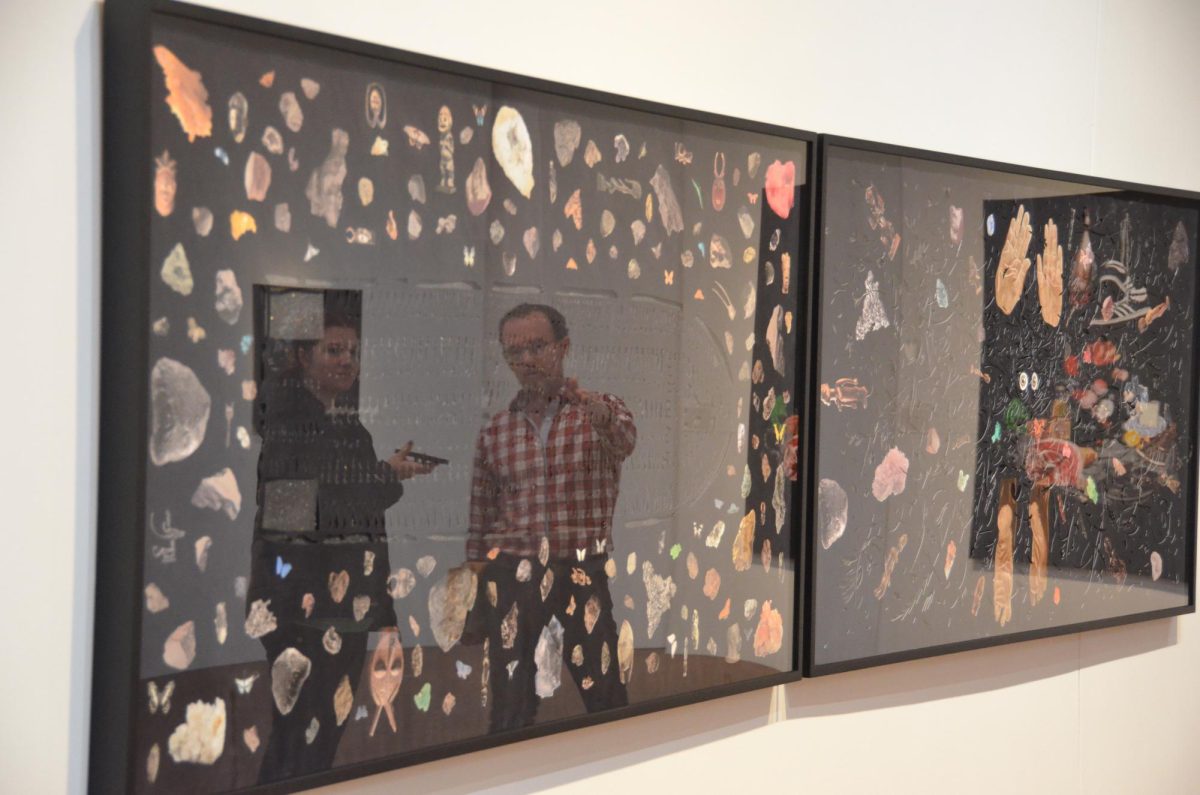By Kelly Page
pagekell@grinnell.edu
On Wednesday, Feb. 28, Bea Herce-Hagiwara ’18 opened her new show “Induction” in the Smith Gallery, located adjacent to the Dining Hall entrance. Composed of 72 light orange crocheted works stitched together and suspended on wire, in what Herce-Hagiwara described as a “round-ish, encompassing shape,” the exhibition shows how fiber objects demonstrate motion and geometry.
Herce-Hagiwara, a computer science and studio art double major, used computer algorithms as a tool to construct the stitch patterns that she then crocheted for the exhibit.
“Every piece starts with four stitches and ends with sixty four, and what happens in between is up to a random algorithm, so it’ll decide whether to increase stitches or to decrease stitches, and I just run it and whatever comes out I make,” she said.
It was important to her to incorporate randomization into the creation of these crocheted pieces — by using algorithmically generated patterns, Herce-Hagiwara demonstrates how crocheting incorporates knowledge of geometry and mathematical concepts.
“With a single click I can generate hundreds of patterns, each one individually containing a fraction of the geometric sensibility it took to design the algorithm itself. Each one containing even less, still, of the thoughtful geometry of countless other hand crocheted items that exist in the world today, some in your very own homes and lives,” she wrote in her statement for the show.
The core of Herce-Hagiwara’s motivation for making a crocheted art installation was her own deep appreciation of fiber objects, something she hopes to pass on to viewers of the exhibit.
“Knowing the thought that I’ve put into it and the thought that I put into fiber objects that I see and interact with I hope that people will get a different understanding of fiber objects after they read what I have to say about my own piece and what I have to say about fiber objects, not just as objects of nostalgia and memory but as evidence of motions that went into creating them.”
Herce-Hagiwara sees crocheted works as more than just static objects. To her, they are a catalog of movements, a perspective she wishes to communicate in “Induction.”
“Handmade objects serve a greater purpose than vehicles for nostalgia and memory; they are the physical evidence of actions that have been taken days, years, decades, even millennia before. As informative as any video footage, a handmade artifact tells us the motions of the hands and the methods of the mind that made them,” Herce-Hagiwara wrote.
Herce-Hagiwara’s focus as a studio art major is sculpture, and crocheting is interesting to her because, as she says, it “translates very well to sculpture and to 3D forms.” She has a website, Ravelry, where she sells patterns for knitted and crocheted works. It features everything from cardigan patterns to instructions for crocheting an avocado. The crocheted works for “Induction,” though more abstract, demonstrate the same attention to detail and expertise in creating and executing crochet patterns.
Walking through “Induction,” among the individually crocheted circular sculptures suspended in the room as if floating above the ground, the viewer can recognize crochet as something intricate, mathematical and beautiful. Seeing crochet used to make shapes other than the hats and rugs that one might expect causes different forms of contemplation. The shapes look fluid, a reminder that even though they hang static in the room, they are a product of thousands of Herce-Hagiwara’s motions, compiled and displayed in the Smith Gallery.
